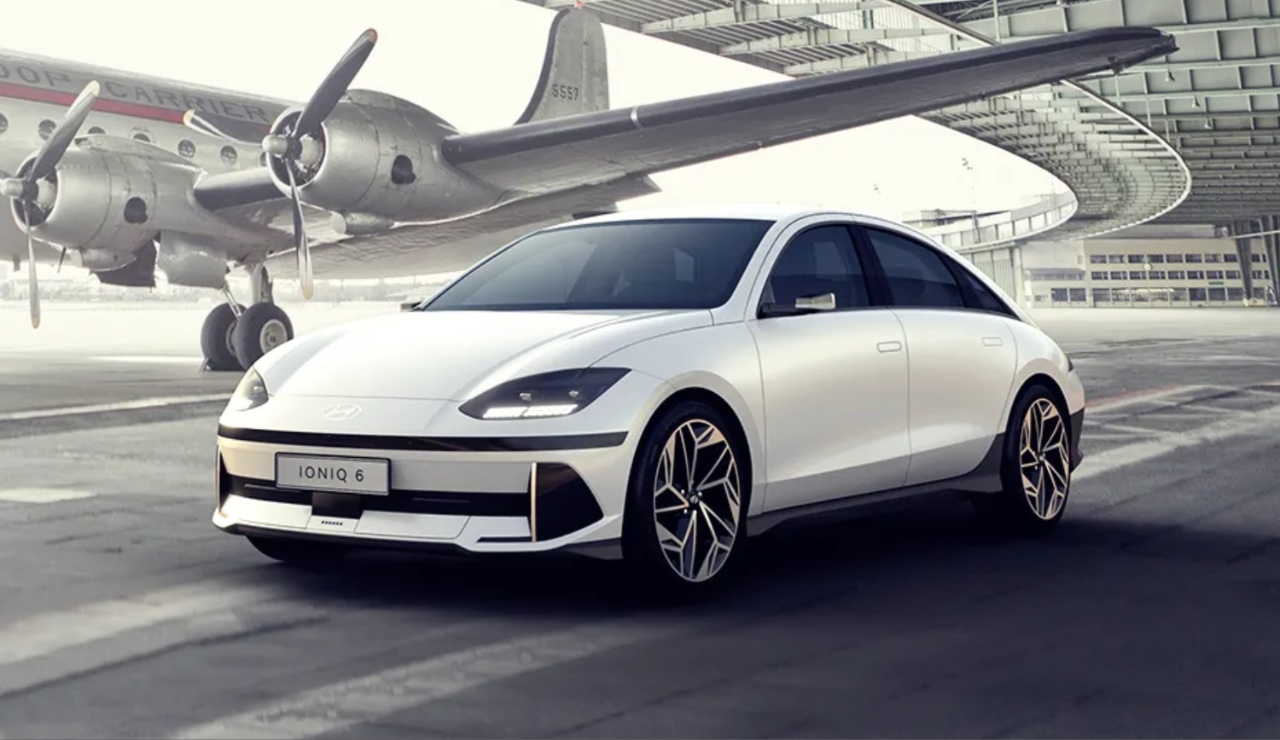Here we are once more, embarking on a journey to assess the latest electric vehicle (EV) offerings of the year. After a week of rigorous examination, relentless test drives, and endless hours spent recharging, it is with great pleasure that we announce the Hyundai Ioniq 6 as the standout champion, following in the footsteps of last year’s Ioniq 5. This elegant sedan has secured the top prize in this year’s competition, firmly establishing Hyundai’s dominance in the realm of mainstream EVs.
While the Ioniq 6 shares many similarities with its sibling, the Ioniq 5, it is far from a mere copycat. “Just look at it,” we exclaimed when the Ioniq 5 claimed victory, and the same sentiment holds true for the Ioniq 6. While their designs differ, the banana-shaped sedan is just as visually captivating as its angular hatchback counterpart.
The sloping profile even conjures memories of the first-generation Mercedes CLS. Interestingly, Hyundai draws inspiration from the 1930s Stout Scarab, a nearly century-old machine, and upon comparing the two, you’ll find that this notion is not simply a flight of fancy from the designers.

Irrespective of the origins of its design, the Ioniq 6 boasts exceptional aerodynamics, with a remarkable drag coefficient as low as 0.22. What’s more, it’s refreshing to see an automaker introduce a dedicated electric sedan (joining the ranks of the Polestar 2 and Tesla Model 3) rather than another mid-size crossover.
Beneath the surface, Hyundai’s E-GMP platform continues to shine. The Ioniq 6 comes with a single rear-mounted motor, producing either 149 or 225 horsepower (depending on the battery size) and 258 pound-feet of torque.
Alternatively, it can be equipped with dual motors, combining for 320 horsepower and 446 pound-feet of torque. Most models are equipped with a 77.4-kWh battery pack. Our EV of the Year test car, a dual-motor Limited, impressively achieved 220 miles in our highway test and boasts an EPA rating of 270 miles of range.
The range estimates only get better from there. The single-motor Limited garners an EPA estimate of 305 miles, while the dual-motor SE, fitted with 18-inch wheels instead of the fancier 20-inch ones, reaches an impressive 316 miles.
Notably, the single-motor SE turned heads with its 361-mile EPA range estimate (although we observed 260 miles in our highway test). Additionally, it boasts a stellar 140-MPGe combined figure, surpassing the rear-wheel-drive Tesla Model 3’s 132 MPGe. (An entry-level model with a smaller 53.0-kWh battery pack provides correspondingly less range, with 240 miles on the EPA cycle.)

When the battery’s charge diminishes, the Ioniq 6’s 800-volt architecture allows for rapid recharging at up to 235 kilowatts, making it one of the quickest-charging mainstream EVs available.
In terms of speed, the dual-motor version accelerates to 60 mph in a swift 4.3 seconds, although the accelerator response may feel less spirited compared to some other dual-motor EVs, like the EV6 GT. The 225-hp single-motor version covers the same sprint in 6.2 seconds.
The Ioniq 6’s robust structure provides unwavering composure, ensuring a comfortable ride even on uneven roads. The suspension is taut and well-damped, with the car remaining stable during cornering. Hyundai has also excelled in brake pedal feel and allows easy customization of regenerative braking via steering-wheel paddles, including the option of turning it off entirely.
It must be noted, however, that the Ioniq 6’s soundtrack, or lack thereof, leaves something to be desired—though to be fair, this is a matter of personal preference. Nonetheless, the absence of excessive noise allows the Ioniq 6 to showcase its excellent sound isolation.

In terms of interior quality, one should not expect upscale materials at this price point. Nevertheless, the design is innovative, particularly the sleek door panels. The sloping roofline may encroach on the rear headroom, even with the low-set seat cushion.
Thankfully, Hyundai has maintained its infotainment system for electrified vehicles, and the switchgear remains consistent. Ample console storage further enhances convenience. However, the trunk space is predictably modest, and the frunk doesn’t provide much compensation, capable of holding little more than a few notebooks.
The Ioniq 6 excels as both a well-crafted electric vehicle and an enjoyable car to drive. This refined EV demonstrates Hyundai’s mastery of the E-GMP platform, firmly cementing its place in the winner’s circle once again.

